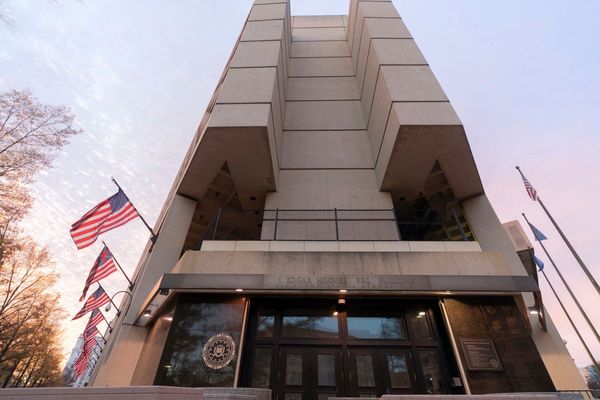If you’re reading this (hi, how are you?), then you probably enjoy the thrill of letting a bit of horror and terror into your life. It’s exciting, gives you a chance to analyze the dark side of humankind, and gets your adrenaline pumping. However, real life can often be scarier than what you find in fiction.
‘DarkestGram,’ an account on Instagram, posts some of the darkest and most disturbing pics and stories from human history. We’ve collected some of the most powerful tales to share with you, Pandas. Keep scrolling to check them out. Just be careful… some of them might unsettle you so much, you’ll barely get any sleep tonight.
#1

Image credits: darkestgram
#2

Image credits: darkestgram
#3

Image credits: darkestgram
Terror is the buildup of dread and anticipation toward a disturbing, scary event. Meanwhile, horror refers to your instinctive feelings of revulsion and disgust after the event occurs. Though they are different, colloquially, horror is often used to refer to both. You hear a lot of talk about horror movies, TV shows, books, and video games, even when the narrative focuses on building up an atmosphere of terror.
Verywell Mind notes that scary content, like horror movies, simulates threatening situations. Your emotional response to them matches what you’d experience when faced with a real-life threat. As per horror scholar Mathias Clasen, people’s love of the genre can be linked back to our ancient ancestors experiencing constant danger.
Meanwhile, there’s a growing consensus that, in some circumstances, exposure to horror movies could help some individuals deal with their anxiety or trauma. One study, for example, looked at how fans of apocalyptic horror movies may be more prepared for and less distressed by pandemics.
#4

Image credits: darkestgram
#5

Image credits: darkestgram
#6

Image credits: darkestgram
According to the findings of researchers Haiyang Yang from the Johns Hopkins Carey Business School and Kuangjie Zhang from the Nanyang Technological University Singapore, one of the main things that drives the consumption of horror entertainment is stimulation. It can be incredibly physically and mentally stimulating to expose yourself to terrifying stories, whether that’s something like demonic possession or stories about alien infestation.
#7

Image credits: CreepyKnowledge
#8

Image credits: darkestgram
#9

Image credits: darkestgram
Horror content brings with it very contrasting, clashing feelings. You get a bunch of positive and negative emotions.
On the one hand, you experience a ton of anxiety and fear.
On the other hand, you also experience a large amount of joy and excitement. It’s thrilling, captivating, and it makes you crave more.
#10

Image credits: darkestgram
#11

Image credits: darkestgram
#12

Image credits: darkestgram
The Johns Hopkins Carey Business School explains that horror entertainment gives people the opportunity to sate their curiosity and appetite for unusual content. You get to dive deep into some of the darkest parts of humanity from the safety of your own home. Whether or not the stories themselves are realistic isn’t the point.
#13

Image credits: darkestgram
#14

Image credits: darkestgram
#15

Image credits: darkestgram
People who are big fans of horror tend to have a psychological protective frame that’s made up of 3 parts.
First, they have a safety frame, where they know that they are safe while enjoying horror content.
Second, they have a sense of detachment, where they understand that what they see and hear isn’t actually real or threatening.
And finally, they have a sense of control where they feel confident that they’ll be able to overcome any and all dangers that they encounter. You don’t have to have all 3, but having fewer can mean that you avoid horror content.
#16

Image credits: darkestgram
#17

Image credits: darkestgram
#18

Image credits: darkestgram
How well-off you are can impact your love or dislike of horror, too! Research conducted by Yang and Zhang found that people from countries with a higher GDP per capita actually watched more scary content.
On the flip side, people from countries with less wealth feel like they have less control over their circumstances, pushing them away from the genre.
“Our sense of control can serve as a form of psychological protective frame, a prerequisite to experiencing pleasure from horror consumption,” Yang explained.
#19

Image credits: darkestgram
#20

Image credits: darkestgram
#21

Image credits: darkestgram
The Washington Post stresses the fact that recreational fear can be a lot of fun under the right circumstances. But it’s not just about enjoying yourself. Horror can be an important tool for learning. Not only do you get the rush and a boosted mood from getting scared, but you also prepare yourself for (theoretical) dangerous situations.
The director of the Recreational Fear Lab at Aarhus University, Mathias Clasen, told the Washington Post that people consuming horror learn about the dangers of the world and better understand their own responses. “What does it feel like to be afraid? How much fear can I take?”
#22

Image credits: darkestgram
#23

Image credits: darkestgram
#24

Image credits: darkestgram
The key is to find some sort of balance between too much and too little fear. If a recreational horror experience is too tame, your audience is likely to get bored. However, crank the fear up too high and people will be far too anxious to enjoy themselves.
It’s a balancing act that’s hard to get right because everyone’s relationship with horror is so individualistic.
#25

Image credits: darkestgram
#26

Image credits: darkestgram
#27

Image credits: darkestgram
The ‘DarkestGram’ project was created on Instagram quite a while back, in May 2019. Over the past 6+ years, the curator of the account has drawn in over 47k loyal followers and scary-story lovers from all corners of the internet.
From the curator’s perspective, the account is the “darkest page” on the entire social network.
#28

Image credits: darkestgram
#29

Image credits: darkestgram
#30

Image credits: darkestgram
Which of these stories disturbed you the most? Were there any that piqued your curiosity and motivated you to dig even deeper into the events?
On a scale of ‘nope’ to ‘yay!’, how big of a horror content fan would you say that you are? Share your thoughts in the comments at the bottom of this post (if you dare!).
#31

Image credits: darkestgram
#32

Image credits: darkestgram
#33

Image credits: darkestgram
#34

Image credits: darkestgram
#35

Image credits: darkestgram
#36

Image credits: darkestgram
#37

Image credits: darkestgram
#38

Image credits: darkestgram
#39

Image credits: darkestgram
#40

Image credits: darkestgram
#41

Image credits: darkestgram
#42

Image credits: darkestgram
#43

Image credits: darkestgram
#44

Image credits: darkestgram
#45

Image credits: darkestgram
#46

Image credits: darkestgram
#47

Image credits: darkestgram
#48

Image credits: darkestgram
#49

Image credits: darkestgram
#50

Image credits: darkestgram
#51

Image credits: darkestgram
#52

Image credits: darkestgram
#53

Image credits: darkestgram
#54

Image credits: darkestgram
#55

Image credits: darkestgram
#56

Image credits: darkestgram
#57

Image credits: darkestgram
#58

Image credits: darkestgram
#59

Image credits: darkestgram
#60

Image credits: darkestgram
#61

Image credits: darkestgram
#62

Image credits: darkestgram
#63

Image credits: darkestgram
#64

Image credits: darkestgram
#65

Image credits: darkestgram
#66

Image credits: darkestgram
#67

Image credits: darkestgram
#68

Image credits: darkestgram
#69

Image credits: darkestgram
#70

Image credits: darkestgram
#71

Image credits: darkestgram
#72

Image credits: darkestgram
#73

Image credits: darkestgram
#74

Image credits: darkestgram
#75

Image credits: darkestgram







